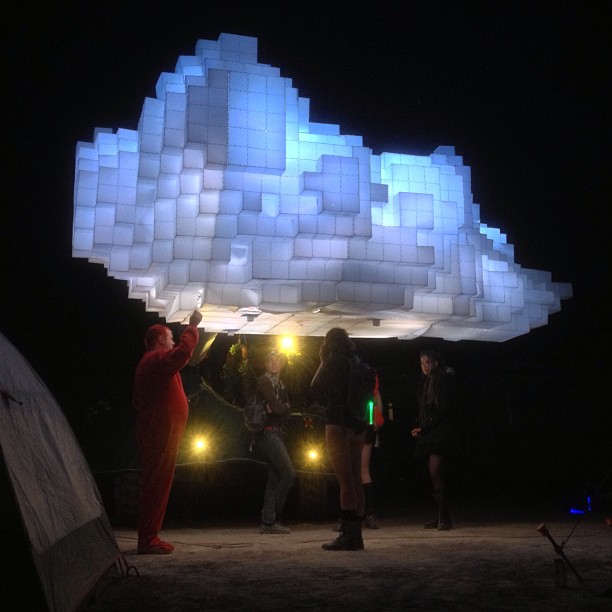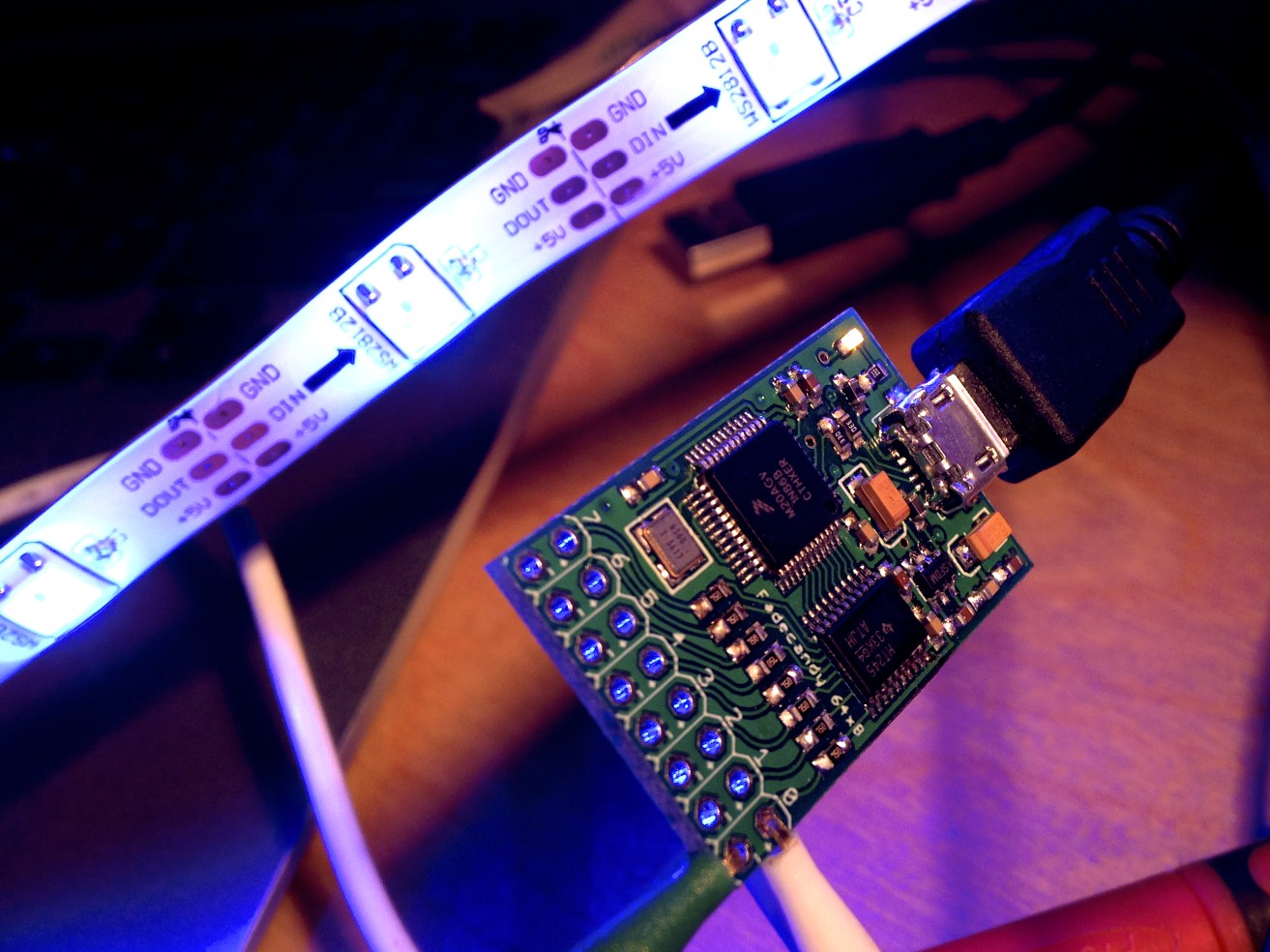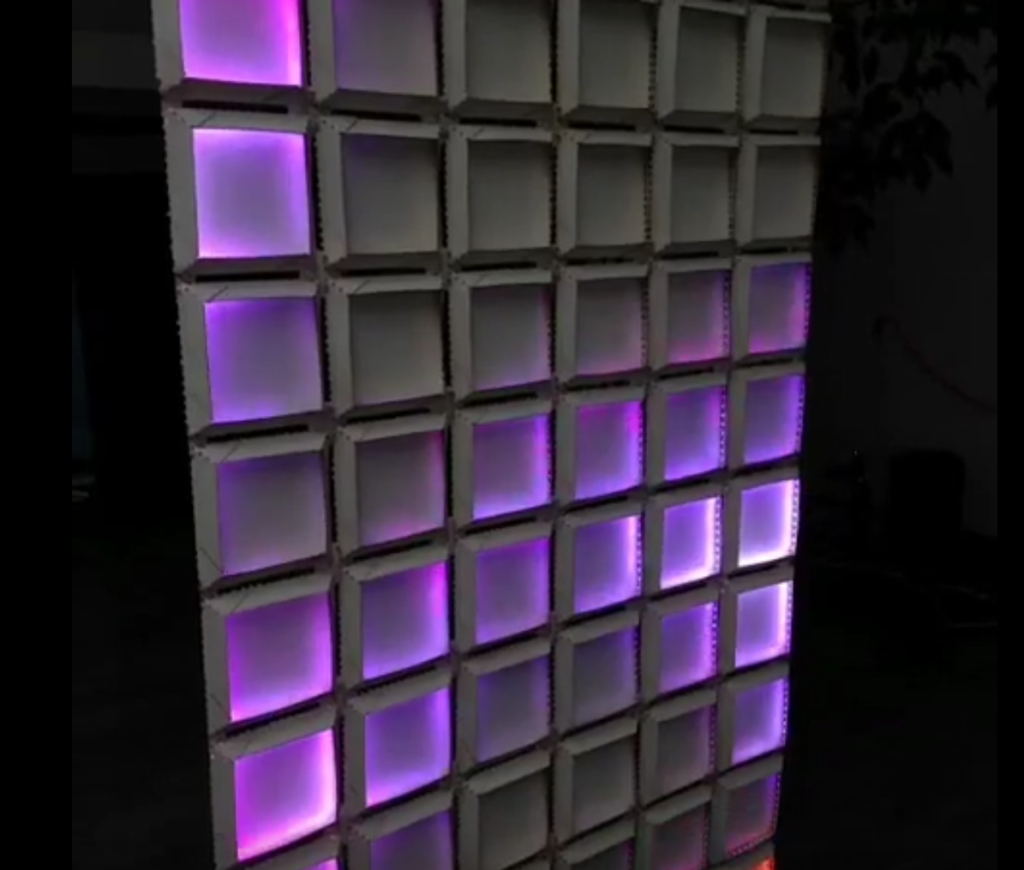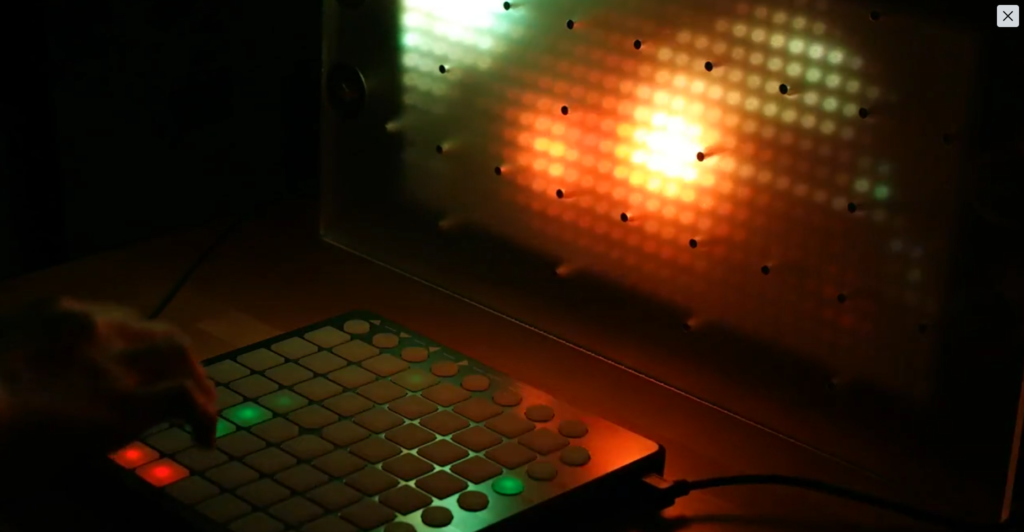
Background
Micah Elizabeth Scott is an artist, engineer, reverse engineer, and tinkerer from California (blog: http://www.scanlime.org) who enjoys taking things apart, learning about how they work, and then using that to inspire art or further projects. She has been doing this since childhood, when she would tinker with hardware and software alike as a form of escapism from the isolation she felt from suburban living and gender dysphoria. To this day, she continues to hack things and reverse engineer – for example, one of her most recent projects involved hacking an active stylus for a drawing tablet into a drawing robot that uses the feedback from the stylus to create art as it drives the pen across the surface of a sheet of paper.
She enjoys working with light, and LEDs in particular, because of the dynamic between the viewer/participant and the art itself. She explained that while an image on a screen seems distant, in its own world beyond the screen, LEDs are much more direct and part of the world. This makes them a compelling medium to create art with, especially when that art is interactive.
Featured Work 1: Ardent Mobile Cloud Platform

Created in 2014 by a large group of artists and makers called Ardent Heavy Industries, this giant cloud sculpture was made for Burning Man. It was lifted up by a forklift, and people could ride in it and dance under it as it traveled around, dispensing water to simulate rain and music via an inbuilt sound system. This sculpture also featured an organic, fluid light display that had over 2000 individually addressable LEDs throughout the interior, controlled by a software created by Micah.

Featured Work 2: Fadecandy

While this is not exactly a piece of art, it is a technology that was very important to Micah’s work and derived from the software and hardware used to control the lights in the Ardent Mobile Cloud Platform. Once that project was finished, Micah continued to refine the system and then released it to the public as open-source hardware and software, allowing anyone to easily create organic and smooth LED displays. This system uses a form of temporal dithering to smoothly fade and blend colors, and can control up to 512 LEDs.
Featured Work 3: Ecstatic Epiphany

This piece was created in 2014 as well, as a display for a new art gallery in a previously-abandoned building in LA. It uses a large panel of LEDs to create emergent and sometimes chaotic movement, to create an experience that was interesting even when viewed from across the room. However, it also had an interactive element – as someone walked by this piece and it detected their motion, it would move the light design to simulate a parallax effect, making it seem as if the space behind the panels was vast and deep. The shifting patterns were inspired by Micah’s creative process, and were set on a long loop that would change parameters each time, making it never show the same pattern twice.
Featured Work 4: Mixcandy

Another work of Micah’s that uses Fadecandy is Mixcandy, which was created for Music Hack Day in 2014. It combines the expressive Fadecandy powered LED panel with a live musical performance tool, mapping beats of a song to different buttons on a Launchpad MIDI controller. By pressing different buttons, the playback would skip to different parts of the song, allowing someone to “play” a song as if it was an instrument, skipping around to timed beats and discovering interesting ways to remix the track. The lights adapt to the music and to the user’s input to create an immersive, evolving experience.
Fade candy! That device is such an impressive device that enables us, light artists, to really express our creativity. It’s just really sad that she decided to discontinue the fade candy.